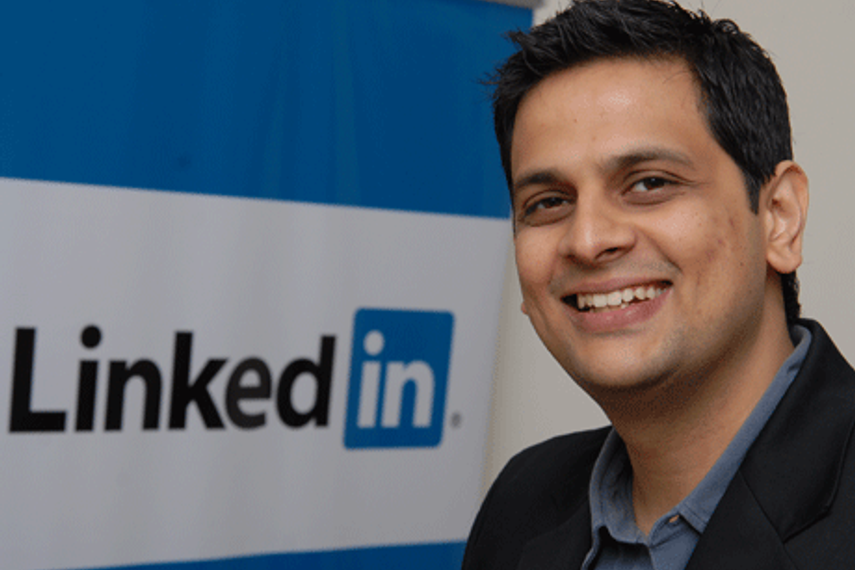
Campaign India: How would you explain the growth in membership to 15 million, and what percentage would be premium members?
Hari V Krishnan (HK): We launched in November 2009 with 3.4 million members. Today we have expanded to be over 15 million members and more importantly, there is a broader awareness of the product offerings from LinkedIn. Beyond individual professionals, we have been able to engage the corporate ecosystem, taking LinkedIn into the core of corporate India.
With respect to premium members, the number would be relatively smaller, because premium accounts are not meant for all professionals. There are specific categories of professionals - like, for instance, market researchers, business development executives and even journalists - among whom premium memberships have found many takers.
CI: How have the revenue streams like marketing and hiring solutions grown?
HK: Revenue comes from the three streams of hiring solutions, marketing solutions and premium memberships. Globally, the largest contributor to revenue is hiring solutions. I am not in a position to give the break up specific to India.
But within the marketing solutions space, LinkedIn can claim to have the most educated, influential and affluent base of members; and this is specifically true in India.
In the case of B2c marketing, we are able to cater to specific segments of customers because of the nature of the network, and also not just on inclination but also on the ability to buy certain products.
The second aspect about which we are most excited is the digital opportunity for B2b marketing on our platform, for companies in India and globally. B2b marketing would be a smaller contributor (relative to B2c) for LinkedIn, but in markets like the US and UK, it is the largest B2b platform, by far. That is because of our ability to target the communication to individual decision makers and groups of them - be it the CFO or CIO (and so on). That is simply not possible on other platforms. B2b marketing spends on digital media would be less than 5 or 10 per cent of the total spend on digital, but we’re seeing companies increasingly wanting to move to this space.
CI: Could you name some of the customised marketing solutions created on LinkedIn? One for Amex has been shortlisted at the Campaign India Digital Media Awards…
HK: In the case of Amex, they used our APIs and took it to an external microsite. Then people could recommend each other and so on. What was interesting was that they made use of the unique user base of LinkedIn. For a paid, subscription-driven credit card, the audience is very small, and therefore targeting becomes important.
We see heavy adoption by other brands as well. A large consumer software brand also rolled out a similar solution, which was again a B2c solution. More recently, we have seen retail brands in other sectors evincing interest, and they should go live soon.
CI: Where do these solutions come from? Is LinkedIn working with agency partners?
HK: We have been working more with brands directly to develop solutions. To start with, the ideation has come by and large from the LinkedIn marketing team. But there are more and more sources of ideas now, and we are working with agency partners too.
Corporates are engaging directly with LinkedIn too. Some of them have created company pages on LinkedIn, like Jet Airways and Franklin Templeton. People have also used our polls innovatively, where depending on the response the banner inventory could change.
CI: How has LinkedIn mobile grown?
HK: It has been growing the fastest. In January 2011, around 8 per cent of our members accessed LinkedIn via mobile. Today this number is at over 20 per cent, and growing faster than the overall member base. The growth on mobile has come from focus on simplifying products, and building what is right for that particular platform – be it Blackberry, Android Windows Phone or the iPhone. The kind of features we have built into the apps have aided this growth, be it the calendar or news, customised for each platform.


.jpg&h=334&w=500&q=100&v=20250320&c=1)

.jpg&h=334&w=500&q=100&v=20250320&c=1)
.jpg&h=334&w=500&q=100&v=20250320&c=1)

.jpg&h=334&w=500&q=100&v=20250320&c=1)










.jpg&h=268&w=401&q=100&v=20250320&c=1)
.jpg&h=268&w=401&q=100&v=20250320&c=1)
